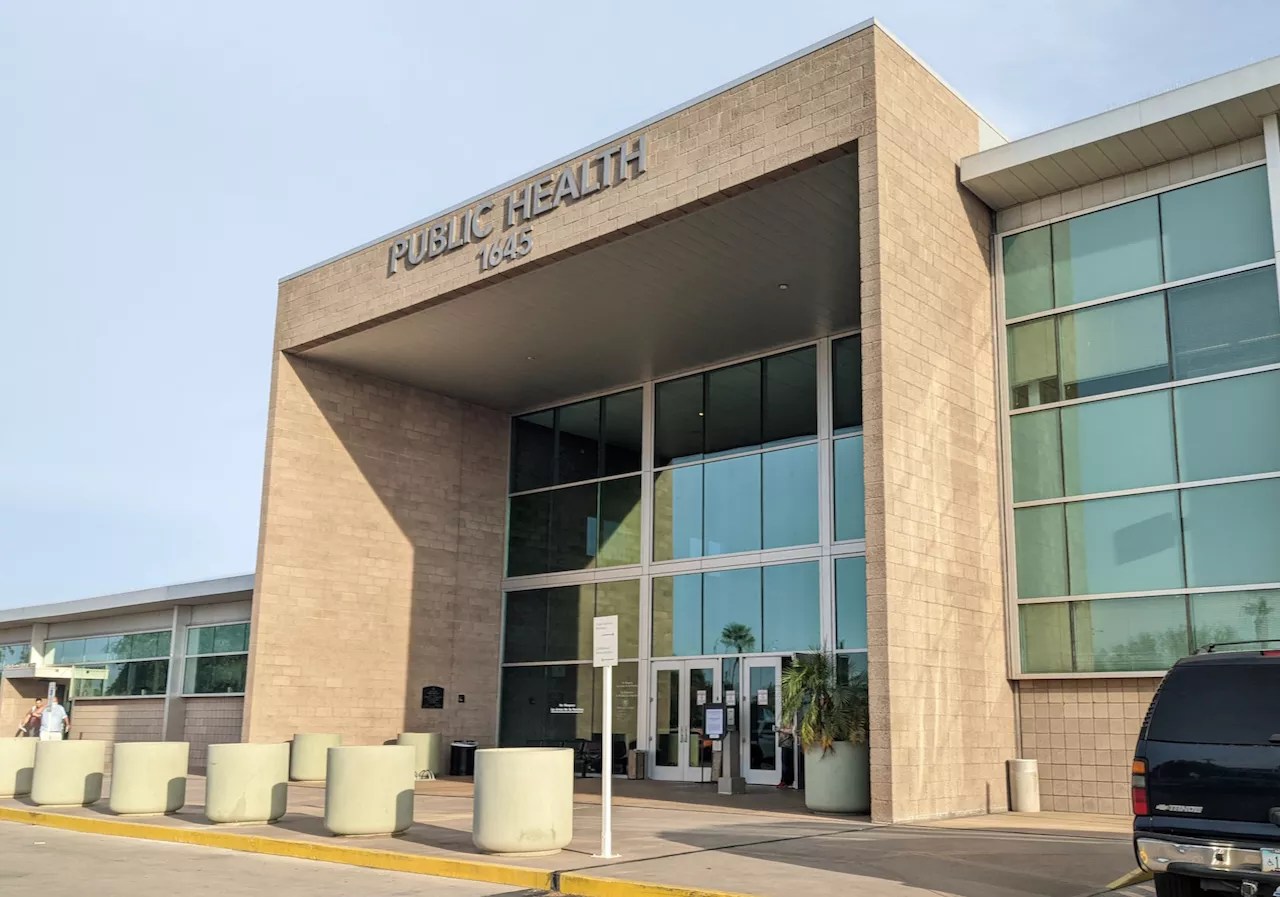
mapodile/Getty Images

Audio By Carbonatix
If a dangerous communicable disease breaks out in Maricopa County, a team of epidemiologists from the county health department deploys to contain it.
If a kid in Gilbert contracts measles – something that has not yet happened, despite measles breakouts in other states – county health workers ensure that kid is isolated and cared for. Working backward, they trace the child’s possible contacts, reaching out to check on anyone who might be at risk. If epidemiologists respond quickly enough, a small outbreak does not become a big one.
The Maricopa County Department of Public Health can do this – or, at least, do it so well – thanks to federal funding. During the COVID-19 pandemic, the county received an Epidemiologist and Laboratory Capacity supplement grant, known as ELC 2, from the federal government, administered by the Arizona Department of Health Services. The grant boosted the county’s ability to investigate 82 communicable diseases, including measles, mumps, rubella, diphtheria, rabies, hospital infections, and food-borne outbreaks.
But now, the Trump administration’s funding freezes have risked the county’s ability to respond quickly to a brewing epidemic.
Will you step up to support New Times this year?
At New Times, we’re small and scrappy — and we make the most of every dollar from our supporters. Right now, we’re $15,500 away from reaching our December 31 goal of $30,000. If you’ve ever learned something new, stayed informed, or felt more connected because of New Times, now’s the time to give back.
In late March, the U.S. Department of Health and Human Services pulled back $11.4 billion in COVID-19-related grants allocated to state and local health departments. For Arizona, nearly $240 million in public health funding was eliminated, including five grants worth $18 million awarded to Maricopa County. As a result, the county health department laid off 21 employees and axed another six positions within the department.
Those funding freezes, which Arizona Attorney General Kris Mayes called “not only illegal but also profoundly dangerous,” are now themselves frozen due to a lawsuit brought in early April by Mayes and a coalition of other states. Yet in Maricopa County, the uncertainty over funding has already had a negative impact. Freeze or no freeze, the county and state health departments have had to cut back on their mission of protecting public health.
In a statement to Phoenix New Times, state health department spokesperson Niala Charles said the department is “working internally to assess programs and projects and maintain services,” but added that the department is “working through the difficult reality that without resources, not all activities will last.”
The public rarely recognizes the benefits of those activities, at least not until an outbreak happens. Thanks to vaccination efforts funded in part by those grants, those outbreaks often never do. But those programs have been curtailed as well, meaning the defenses of one of the country’s most populous counties have been lowered.
“Everything from A to Z is being decimated,” said Will Humble, the executive director of the nonprofit Arizona Public Health Association. “It’s setting back public health 20-30 years. We’re going to end up with the public health system we had in the 1990s.”

The Maricopa County Department of Public Health lost million in funding.
Matt Hennie
What the cuts affect
The clawback of health grants has affected every corner of the state.
More than 260 Arizona Department of Health Services contracts were discontinued due to the cuts. All of Arizona’s 15 counties and tribal nations were impacted, spanning from Apache County in the northeast to Yuma County in the southwest.
Mohave County lost more than $1.1 million in funding, which will hamstring its mobile health unit staff, which experienced layoffs. Pinal County will have to cut its mobile vaccination programs and two positions related to vaccine equity. Fifty health employees were laid off in Pima County, while the Yavapai County Public Health Department had to eliminate several epidemiology, nursing and health educator positions. The cuts have forced Yavapai County to lay off at least 13 staffers.
Maricopa County is the biggest in the state, and the cuts will hit it the hardest. The county lost immunization and health disparity grants that allowed its health department to expand vaccine clinics. It put on mobile vaccine events to ensure vulnerable populations – for people in rural areas, for uninsured communities, for people with disabilities – could access vaccines that prevent COVID-19, influenza, measles, mumps, rubella and more.
Without the federal funding, the department had to lay off some of the health educators and nurses who worked on these teams. County vaccine clinics have expanded since the onset of the pandemic due to the availability of federal dollars, but now mobile clinics will disappear. Additionally, positions at an internal call center that helped connect residents with vaccine clinics were also eliminated.
“The people that are going to suffer the most are people who can’t even afford health care if they do get sick,” said Ashley Chambers, the executive director of Arizona Families for Vaccines. “Anytime you decrease the ease and access of immunizations, especially immunizations for kiddos, that is a huge, huge negative.”
Texas and New Mexico are learning that the hard way. They have had to confront measles outbreaks – enabled in part by the anti-vax beliefs promoted by Robert F. Kennedy Jr., who now leads the U.S. Department of Health and Human Services – that have killed at least three people so far and hospitalized many more. All from a disease once thought eradicated in the U.S. thanks to vaccination.
Arizona’s low vaccination rate against measles puts it at risk, and the idea that the Grand Canyon State isn’t as protected against such an outbreak is “a really scary prospect,” Chambers said.
“There’s going to be a lot of needless deaths that could have been prevented if we had robust systems in place,” she said.
Maricopa County’s defenses haven’t been entirely eliminated. The county still has staff dedicated to tracking and fighting outbreaks, and several community health organizations do the same.
Though the county lost a $5.7 million health disparities grant – which funds mental health programs for immigrant youth, health testing for older Arizonans and provides adaptive gym equipment for patients with Parkinson’s disease, among other initiatives – much of that money has already been spent. In 2022, that grant money was disbursed to 18 organizations across the Valley. Two of those groups, Pinnacle Prevention and Aliento, told New Times that they had already used the funds, allowing them to survive the public health cuts unscathed.
At least for now. Reyna Montoya, the executive director for Aliento, worries about what’s to come for her organization, which often relies on government funding to support its programming.
“Right now, we’re really struggling thinking about what the future holds,” Montoya said. “The thing that hurts the most is knowing that there’s so many vulnerable communities that were relying on this support that don’t have access now.”